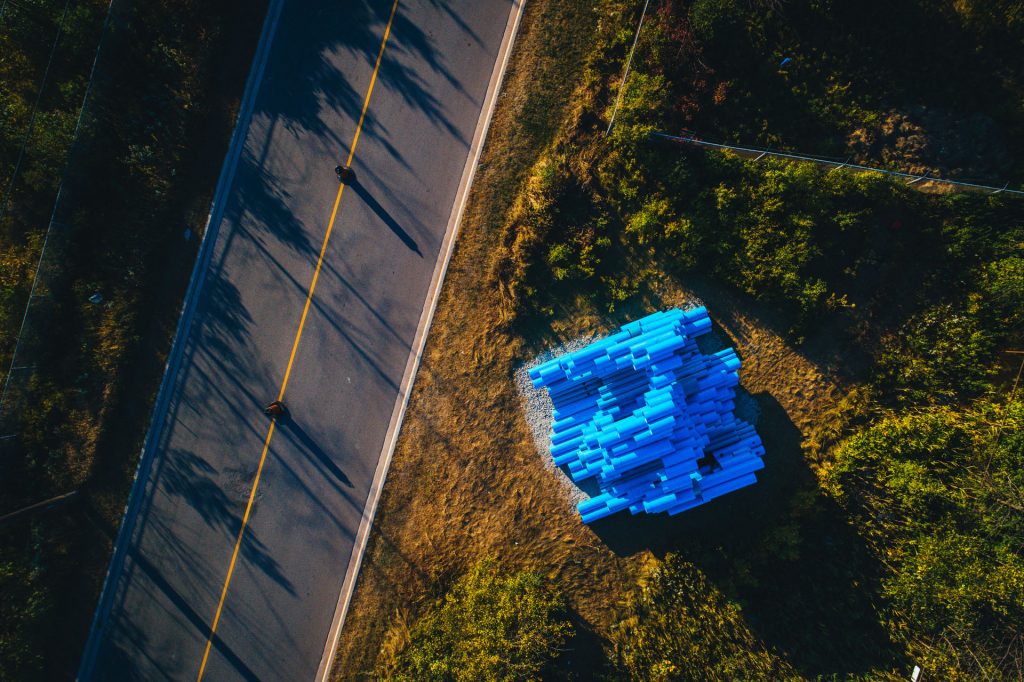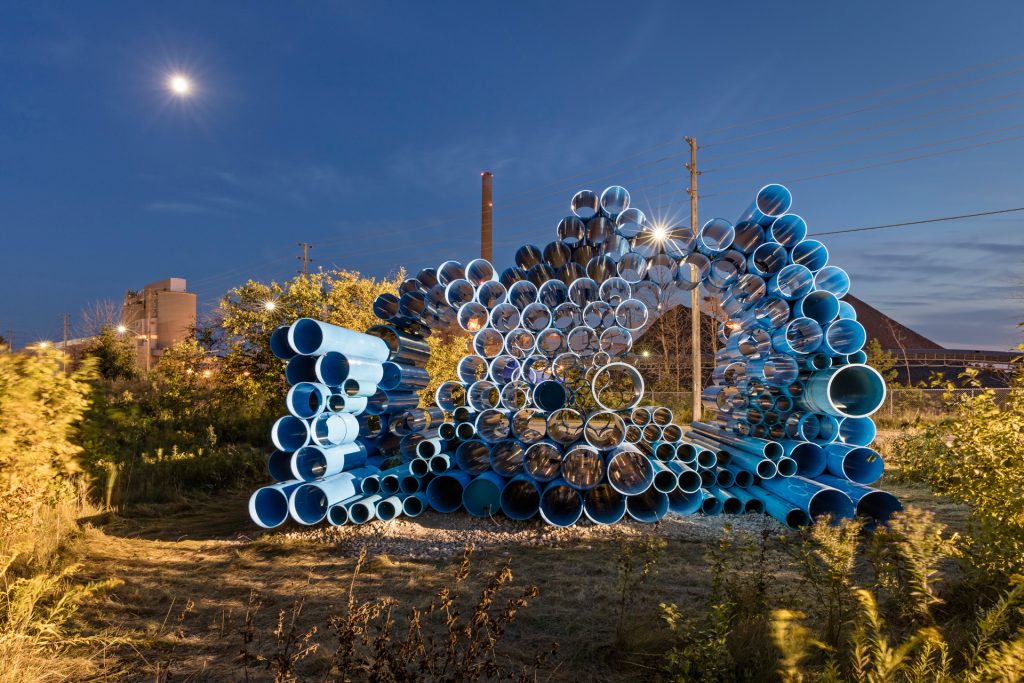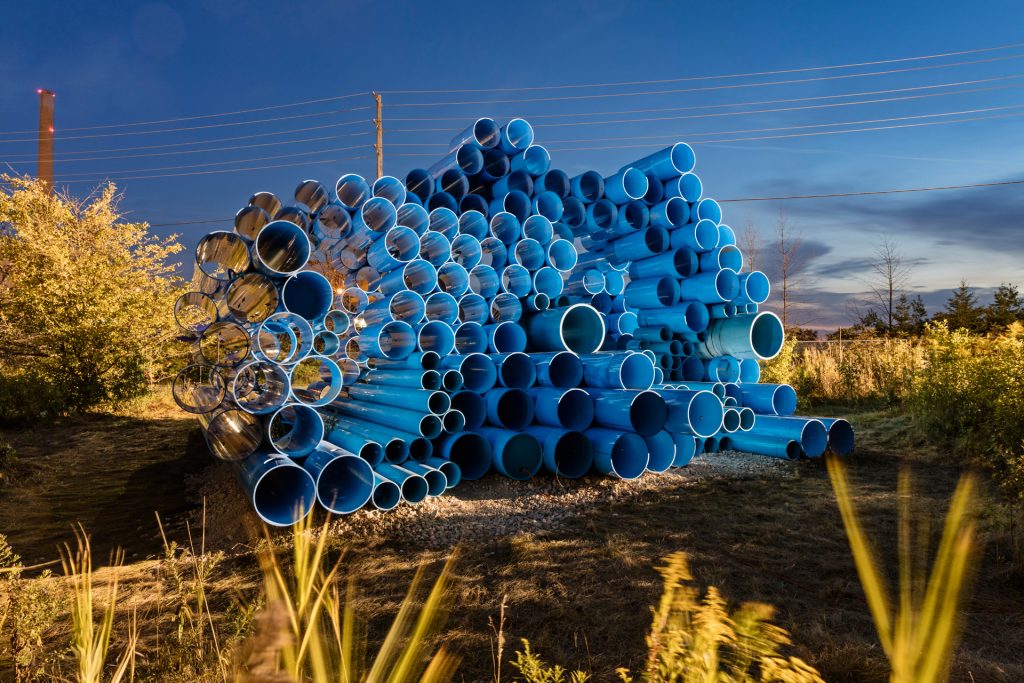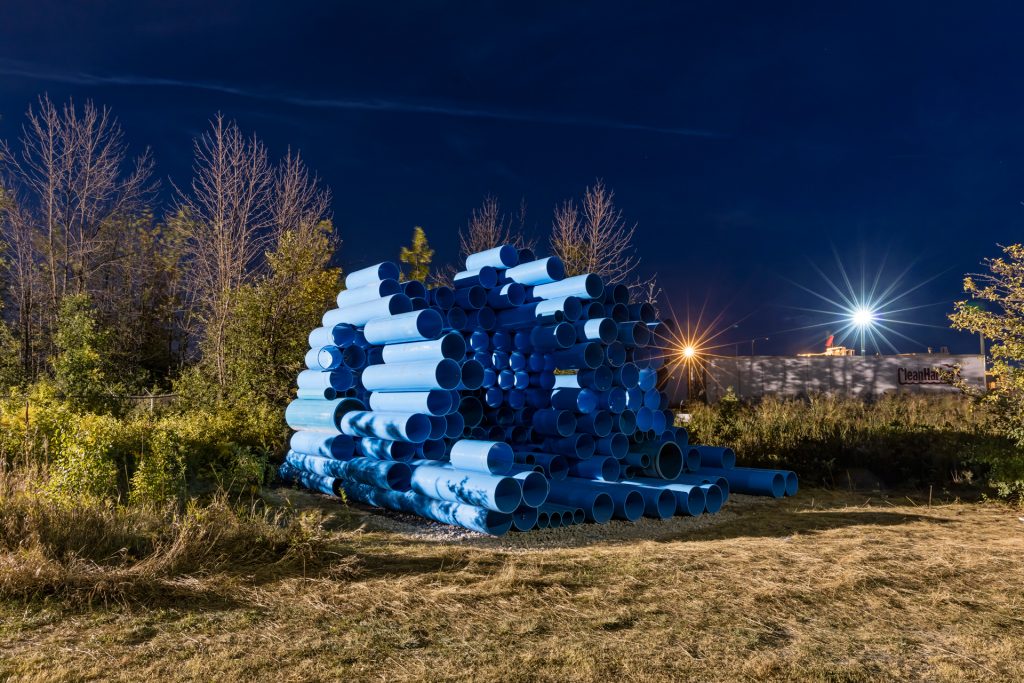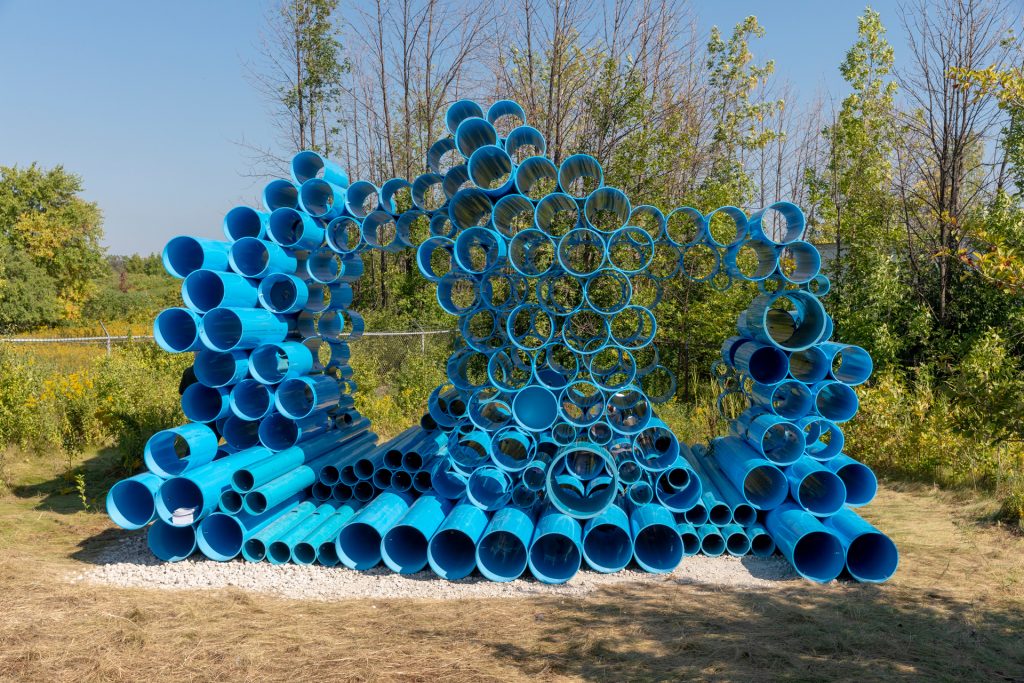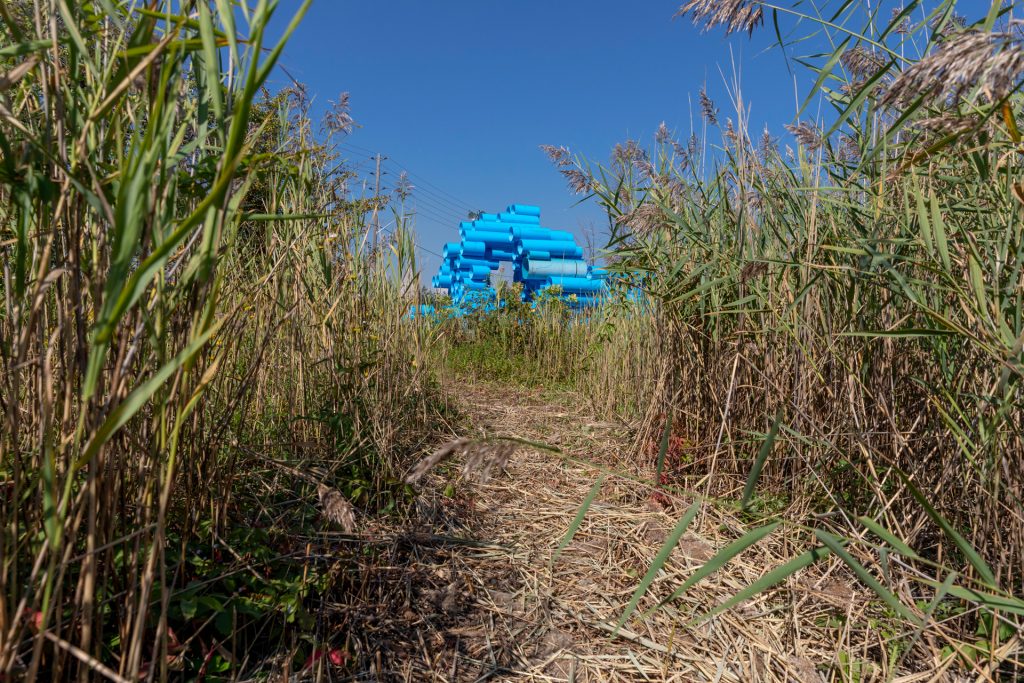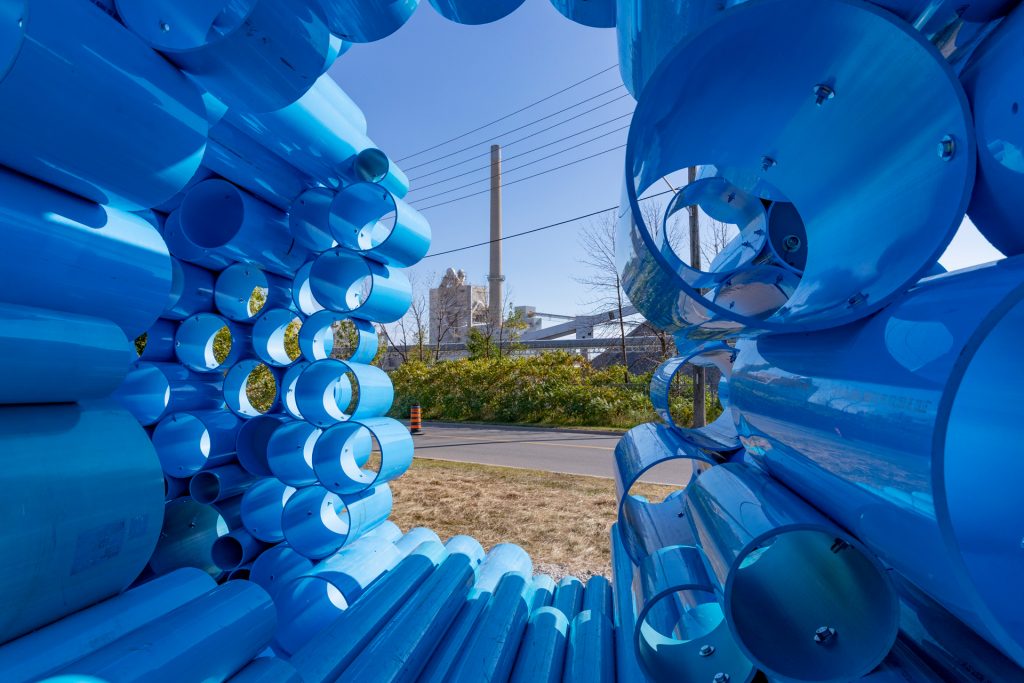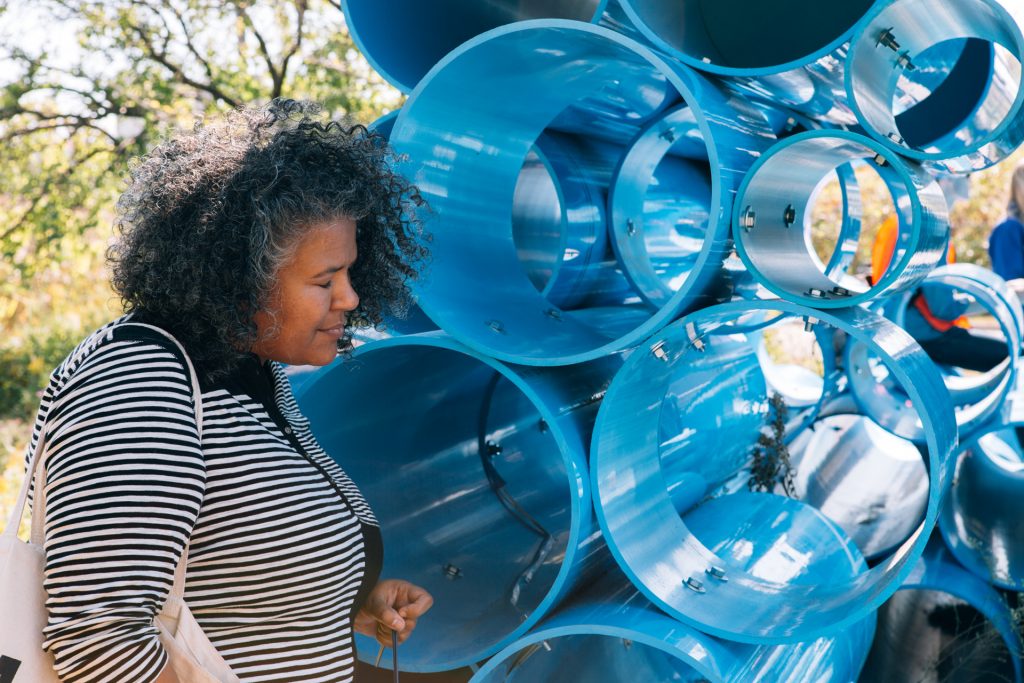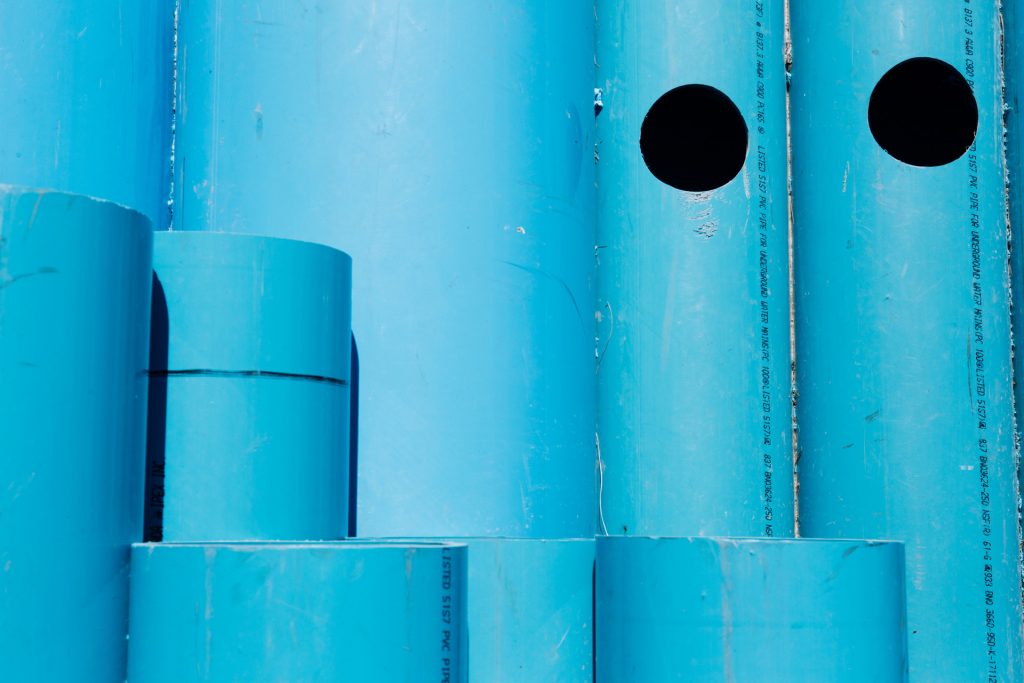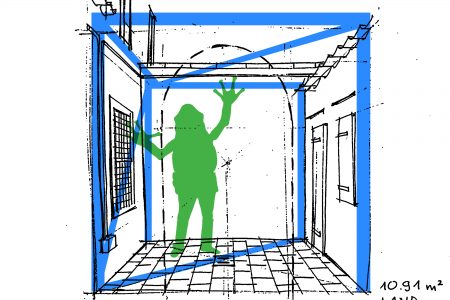Futurity Island is conceptualized as a space for acoustic experimentation. It serves as an infrastructure that hosts sound compositions and performances that open space for learning.
Pipe is the primary structural and symbolic unit of the Island, referencing both the material that has facilitated worldwide land reclamation of swamps throughout the era of modernity and Bertolt Brecht’s statement in The Radio as an Apparatus of Communication (1932): “The radio would be the finest possible communication apparatus in public life, a vast network of pipes. That is to say, it would be if it knew how to receive as well as to transmit, how to let the listener speak as well as hear, how to bring him into a relationship instead of isolating him.”
In Futurity Island, a network of pipes becomes an artificial skeleton that employs sound to channel what we used to call “nature.” Once used to drain swamps, the pipe becomes a metaphor for a human-centered ecology, an infrastructure of environmental domination and one of the prime symbols of the Anthropocene. Futurity Island appropriates the pipe as an anthropocenic technology and builds a sound infrastructure that brings humans and non-humans into a more symmetrical, collaborative relationship, aiming to transmit and to hear the silenced voices of this planet.
By installing sonic transducers within the structure, Gediminas & Nomeda Urbonas create an organic, reverberating object that opens free space for swampy mediations. The installation also becomes a site for acoustic experiments, using sound as a quaking force that destabilizes both architectural space and the human misconception that we are “builders of the environment.”
